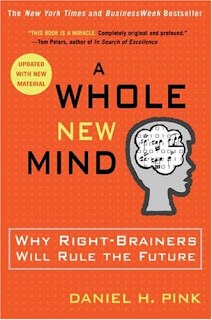In Duval County Public Schools (DCPS) the math workshop model consists of three parts - Launch, Explore, and Summarize
Launch (Opening Meeting 15-20 Minutes)
Lessons may address:
- Presentation of conceptual problem
- Analysis of problem strategies
- Comparison of related problems
Teacher Role:
- Teaches mini-lesson that includes the presentation of a conceptual problem to be solved
- States the focus of the work (concept and/ or skill) clearly connecting it with standards
- Makes expectations explicit
- Teachers should not present particular strategies that will lead students to solve problems in that way during Explore.
Student talk should be to clarify questions
Explore (Work Period 20-25 Minutes)
Student Role:
- Independent work
- Partner work
- Small group work
- Involved in working problems that engage them in different stages of the problem solving process
- Knows exactly what is expected
- Contributes to class activities
- Works with manipulatives and other mathematics tools or resources as needed
- Generates evidence of process used in problem solving
- Uses accountable talk
Teacher Role:
- Monitors student work
- Engages individuals or groups in accountable talk
- Observes students’ discussions and explorations of their strategies
- Makes anecdotal notes on observations, such as misconceptions and strategy development
- Examines student work as it evolves
- Small group instruction
- Conferencing
- Teacher begins to develop the summarize session by noting different strategies that will be addressed during the closing and selecting students or groups to present during the closing.
Summarize (Closing 20 – 25 Minutes)
Student Role:
- Shares strategies and approaches to given problems
- Makes connections to the main concepts from the lesson
- Justifies strategies and solutions
- Compares and analyzes solution strategies presented
- Uses accountable talk
Teacher Role:
- Scaffolds problem solving strategies from least efficient to most efficient
- Scaffolds students as they make connections to the main concepts from the lesson
- Fosters a spirit of inquiry by asking higher order questions
- Addresses misconceptions
- Highlights and records student strategies and generalizations for future reference
Teachers often feel teaching only occurs when they are the one in front of the class. This workshop model turns things around, placing the student in the role of the expert with the teaching coming at the end, during the Summarize. The student is the one teaching how they solved the problem to the other students, demonstrating a strategy. The planning begins during the Explore where the
“Teacher begins to develop the summarize session by noting different strategies that will be addressed during the closing and selecting students or groups to present during the closing.”
This careful planning for the Summarize section is done while the teacher circulates through the room, observing the student application of strategies. The scaffolding of the closing, from the least to the most efficient use of strategies, gives the class a view into the different ways students solved the same problem. Images shared in front of the room, or projected from a document camera, create a temporary view into the thinking. Charting, on the other hand, creates a permanent record of student strategies.
Learning to chart is not difficult. It just takes practice. It also helps to have models and a few guidelines. Amber McFatter, 2nd grade teacher at Neptune Beach Elementary, is one such model. In this video she explains about charting in her classroom.
Charting in 2nd Grade Math from
Jill Kolb on
Vimeo.
Sometimes teachers will tell me "I can't chart in front of the students. My charts look so messy!" It really is okay if the charts are messy because learning is messy. There are strategies for teachers to help with charting.
Preparation

First make sure your chart paper and at least two markers of different colors are available. Most teachers hang the chart, with magnets or tape, right next to the screen so they have a clear view of the student work being projected. It is nice if you have one color marker for each student. Please don't use yellow or pastel markers or any type of highlighter! They are difficult to read and fade very quickly. At Neptune Beach Elementary teachers are encouraged to not only include the benchmark and/or the essential question on the chart but also to include the date.
More Preparation
During the Explore you are planning your closing and selecting students to present their strategies, scaffolding the strategies. You will get an idea on how much room to allow by looking at the student work. Different strategies may not take the same amount of space. It is important, however, to represent their strategy in the same manner as the student. This includes drawing, labeling, and recording student thinking. After a while it gets easier to identify both the efficiency and maturity in the strategies.
Hopefully this will help you and, more importantly, your students create deeper learning with math closings!




